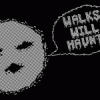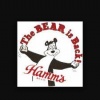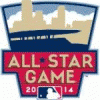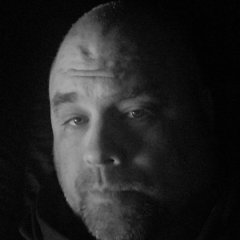Leaderboard
-
in all areas
- All areas
- Images
- Image Comments
- Albums
- Album Comments
- Files
- File Comments
- Events
- Event Comments
- Blog Entries
- Blog Comments
- Topics
- Posts
- Articles
- Article Comments
- Help Files
- Videos
- Video Comments
- Players
- Player Comments
- Players
- Player Comments
- Rumors
- Rumor Comments
- Guides
- Guide Comments
- Players
- Status Updates
- Status Replies
-
Custom Date
-
All time
July 26 2014 - February 19 2025
-
Year
February 19 2024 - February 19 2025
-
Month
January 19 2025 - February 19 2025
-
Week
February 12 2025 - February 19 2025
-
Today
February 19 2025
-
Custom Date
03/06/2015 - 03/06/2015
-
All time
Popular Content
Showing content with the highest reputation on 03/06/2015 in all areas
-
Article: Josmil Pinto and the Frame Game
hybridbear and 6 others reacted to daanderson20 for a topic
Conclusion: Robot umpires. It's time.7 points -

Article: Josmil Pinto and the Frame Game
Jerr and 2 others reacted to Parker Hageman for a topic
We highly encourage dissatisfied readers to do the research and post a blog themselves.3 points -
All this talk of him as a bad fielder is way premature, every analyst I've read saidhe seems to not have any real problems with good hands or movement. The only question was his attention span on each play. He's a big guy, no question, but he's not fat, just really big and broad. No reason at all that for the next 10 years with a cannon of an arm he couldn't remain a good 3rd baseman. He seems very driven and I can't imagine that he won't stay in shape. If that proves to be wrong, then we're in fo a disappointment. But until then, worry about his hitting and strike outs. That's the real key to any stardom.3 points
-
Not sure if posting videos is allowed but this is a great one.2 points
-
.thumb.jpg.48552c72210992c8af51c0f0b81fd8ec.jpg)
Mitch Garver's Big League Spring
nytwinsfan reacted to Steven Buhr for a blog entry
Almost exactly 11 months ago, Mitch Garver arrived in Cedar Rapids to get started on his first full season of professional baseball in the Minnesota Twins organization. This spring, he’s a big league catcher – for now, anyway. Garver, the Twins’ ninth round draft choice in 2013 out of New Mexico, spent all of last season with the Cedar Rapids Kernels, not only playing a leadership role behind the plate but at the plate, as well. He hit .298, led Cedar Rapids with 79 RBI and was voted the Midwest League’s post-season all-star catcher. Garver reported to the Twins’ spring training facility in Fort Myers, Florida, with the other Twins major league pitchers and catchers in February and he’s been putting on a big league uniform every day since. (This article was originally published at Knuckelballsblog.com.) Major League teams invite a limited number of their minor league catchers to big league camp every spring in order to have enough catchers to handle catching duties for all of the pitchers that need to work out their kinks during the first four weeks or so of spring training and Garver got one of those coveted invitations to big league camp this year. (Tyler Grimes, who caught for the 2013 Kernels, also is getting a taste of big league life with the Twins this spring.) On Friday, Garver talked about his experience this spring in the Minnesota Twins’ major league camp. http://knuckleballsblog.com/blog/wp-content/uploads/2015/03/Mitch-Garver.jpeg Mitch Garver (photo: Minnesota Twins) After Garver and the Kernels wrapped up their 2014 season back in September, he spent a little time in Minnesota and Florida getting checked out physically, including a CT scan due to late season concussion issues. “No issues there, everything came back clean,” Garver assured. “It was just an experience for me to make sure everything was OK. I got to see Target Field and everything around there. They wanted to make sure I was healthy enough to go back to Albuquerque to work out, so I was in (fall instructional league in Fort Myers) for a month to kind of iron some things out.” Garver split the next couple of months between time with his fiancé in Corvallis, Oregon, and with his family in New Mexico. It was while in New Mexico that he woke up one morning, about a week before Christmas, to find he had a missed call on his phone. “It was at like eight or nine in the morning and I didn’t know what the number was,” Garver recalled. “So I called it back.” It was a good decision. The call turned out to have been from Twins General Manager Terry Ryan. “He asked me how my health was and made sure everything was good with my hips and with my brain and everything. I told him I was doing great, having a great offseason. Then he invited me to spring training.” That’s major league spring training, with the big league Twins. “It was really exciting. Very cool,” added Garver. Garver has been in camp since February 20 and, as you might expect, walking in to a big league clubhouse as a player for the first time was special. “It’s very different because you walk in and you find your locker and you turn around and there’s five clubhouse guys behind you. Five clubbies, asking you if there’s anything you need, anything they can do for you at that moment in time. You’re just being bombarded with love, it seems like. It’s a cool experience. It’s just fun to be here.” He’s not just there for the cool experience, of course. Garver is there to work. He’s rooming with fellow Twins catching prospect Stuart Turner at the new baseball academy that the Twins have built on-site at their complex in Fort Myers.and, according to Garver, their days get off to a pretty early start. “I wake up at 6:30, we leave the academy about 6:40 and get over to the field. I like to get there a little bit early. They have breakfast for us over there in the new, renovated locker room and kitchen. And the weight room is right there as well. Sometimes you work out in the morning, sometimes you go hit in the morning or you do both. “And then team meetings around 9:00. After that, we head out to different fields and do PFPs (pitchers’ fielding practice), bullpens, live batting practice, baserunning, bunt defense. There’s a defensive station every day. So either we’re catching bullpens or we’re doing something catching-related. For that particular day, it could be blocking or the next day it could be catching pop flies or anything like that. But most of the time, it’s bullpens and we get all of our work in during the bullpens. “When it’s all said and done, it’s probably around 1:00 or 2:00 in the afternoon and you go have lunch and then you call it a day.” The time Garver and other young players get on the field with major league players and coaching staff is valuable, of course, but it’s not the only aspect his first big league spring training that Garver is taking advantage of. “It’s nice to get to know these guys (the major leaguers). You kind of want to get associated with them and learn what kind of people they are off the field, because you already know what they can do on the field. It’s fun to talk with them and converse about different things, finding out where people are from and all of these different stories they have, baseball related or not. “Torii Hunter has some really different stories about everything. It’s fun to listen to him talk. It’s just a good experience overall.” The experience also has made Garver even more aware of just how close he could be to realizing his dreams of being a major league ballplayer. “It’s surreal. You’re playing with superstars and if you put it in perspective, you’re not that far off,” Garver observed. “Just a hop, skip and a jump away from being in the big leagues, whatever level you’re at.” Garver got his first taste of big league game experience on Thursday night, as a pinch hitter, in the Twins first spring training game. It was memorable on multiple levels for Garver. “I was sitting in the dugout (Thursday) night and we were playing the Boston Red Sox. People that I’ve only ever seen on TV, or only ever imagined playing against are in the other dugout,” he recounted. “And in the other dugout is one of my best friends from Albuquerque, Blake Swihart. He’s one of the best catching prospects in the game and it’s just surreal seeing him over there. Then he’s catching when I’m batting and I’m facing a big leaguer (Boston reliever Matt Barnes). It’s kind of weird to think about it, but it’s right there in front of me. I’ve just gotta go get it.” As exciting as the experience has been and continues to be, Garver is realistic and knows his time in the major league clubhouse is going to come to an end (for this season, anyway) shortly. http://knuckleballsblog.com/blog/wp-content/uploads/2014/05/Garver2014b.jpg Mitch Garver as a Kernel Minor leaguers begin reporting to spring training in a few days and eventually Garver will be joining them at the minor league complex across the parking lot from the Twins’ big league facility. Garver is OK with that. “Yeah, it’s coming. I know it is. Everybody knows it is. I think the 15th will be our last day and the 16th is the day we’re sent back. “But you know what, that’s fine with me,” said Garver, in a tone of voice that certainly sounded genuine. “I’ve come, I’ve seen, I’ve learned a lot of things thus far. And I think being sent down to the minor leagues is going to be a good thing because I’ll get to play every day. I can prepare myself for the season, as opposed to helping major leaguers prepare for their season, because I’m just kind of helping out right now.” Asked whether he’d like to add a couple of points to his batting average in 2015, to get it up to the magic .300 mark, Garver laughed and said that was, indeed, one his goals. But then that’s not new. “I want to hit .300, I want to make the All-Star team and I want to have the most RBIs on the team. There you go. Those are my goals. The same as last year and the year before.”1 point -
Article: Josmil Pinto and the Frame Game
jimmer reacted to jorgenswest for a topic
There is little evidence the Twins value framing data or the skill and technique related to framing pitches. You only have to look at the signing of Doumit, the extending of Doumit, the signing of Suzuki and the extending of Suzuki as evidence. Pinto has been trained in the organization since 2006. Despite 9 years, he enters 2015 with very poor technique and skill particularly in the area of framing. He is still young enough to improve his skill, but it doesn't seem likely the Twins can help him. It is hard to have any confidence in the organization's ability to develop or even recognize a catcher's ability to frame pitches. Let's hope the other clubs are wrong and this skill has little effect on runs given up.1 point -
The mantra has been the same over the last month, regardless of the source. “The best division in baseball? You have to think it’s the AL Central.” or “The most competitive division this season looks to be the AL Central!” No matter how it is framed, the reasons listed are always the same:“The perennial favorite Detroit Tigers still have David Price, Justin Verlander and Miguel Cabrera.” “The AL Champion Royals still have that speedy offense and one of the best bullpens in baseball.” “The White Sox have improved across every position and look to be real contenders!” “Don’t discount the Indians! This team has a sneaky offense and a solid rotation!” The conversation typically ends there. When analysts list the division top through bottom, they seemingly always forget to include the team that has, unfortunately, taken up residency at the bottom of the division over the past four years. If we are being objective, we cannot really fault the national media for not paying much attention to the Twins. This team, as currently constructed, is not expected to do any better than fifth in the division. Odds-makers have forecast the Twins around 65 to 69 wins and locally the Twins have fallen off the radar, evidenced by expected all-time low ticket sales (for Target Field) and a growing apathy among the fan base. Yes, our beloved Minnesota Twins have essentially become an afterthought before the season has even begun. While it’s disappointing to see the Twins written off before spring training really gets under way, this national lack of interest directed towards the Twins may actually be a good thing. How exactly do all of the aforementioned “negatives” create a “positive” result? Simply put, it removes a most expectations and pressure from what will be a young team. While Byron Buxton and Miguel Sano will always have some form of pressure as the fan-proclaimed “Saviors” of the Twins, other young players on the verge of the big leagues will play with zero expectations. Players like Danny Santana, Kennys Vargas, Eddie Rosario, Trevor May, Alex Meyer and Nick Burdi can all be allowed to learn and grow on the job without the expectation and pressure that they will deliver instantly and turn the team into a contender. This relaxed atmosphere can make a great difference – instead of being demoted or benched at the first sign of a slump, the young players can work through it, learn to adapt and (hopefully) improve their game, all at the highest level. Of course, this reduced pressure doesn’t amount to much if the team is still an absolute train wreck – but there’s reason to believe the days of horrendous, unwatchable baseball are behind the Twins. While it may be easy to scoff at that line of thinking, dubbing it “early season optimism” the facts point to changes on the horizon. First, the pitching staff has improved. While we will not know to what degree until the season has reached its conclusion, we can safely say that this year’s pitching staff (assuming they all enter the season healthy) is, in fact, better than last year’s rotation. Phil Hughes, Ervin Santana, Ricky Nolasco, Kyle Gibson and Tommy Milone / Trevor May / Alex Meyer create, at the least, a major league viable rotation. Ervin Santana adds another quality starter the team simply did not have last season. Meanwhile, Ricky Nolasco and Tommy Milone enter the season healthy after suffering through injuries last season. Trevor May looked better with each start, and Alex Meyer and his potentially “ace” level repertoire is knocking on the big league door. Even if Phil Hughes regresses, Ricky Nolasco and Tommy Milone don’t bounce back and Trevor May doesn’t amount to anything more than Kyle Gibson 2.0 (which, wouldn’t entirely be a bad thing, mind you), so long as those five are making a majority of the starts, the staff improves simply based on cumulative quality. Lest we forget, Andrew Albers, Yohan Pino and a bevy of AAAA arms made a large number of starts for the Twins last season – it’s addition by subtraction simply by giving the starts to actual major league caliber arms. My final point in favor of the pitching staff: Mike Pelfrey, who entered last season as the team’s third best starter, can now be considered the seventh or eighth best option – a great indicator that the overall quality of the staff has improved. Meanwhile, it’s easy to forget that the Twins finished the second half of the season with one of the best offenses in baseball. Danny Santana and Kennys Vargas have been named as prime candidates for regression, which may be fair. Both played at an absolutely incredible level last season, and it would be unrealistic to expect that to continue without some growing pains this year. Focusing solely on Santana and Vargas is a mistake, however, as it discounts the improvements we saw from Brian Dozier, Trevor Plouffe and Oswaldo Arcia. All three made fundamental changes in their approach at the plate last season, and all three showed marked improvement by season’s end – improvements that give every indication of being sustainable as we enter 2015. Factor in a healthy Joe Mauer, Torii Hunter providing a consistent quality bat and contributions from the improved trio of Plouffe, Dozier and Arcia and there is reason to believe this offense will remain a threat this season. To call the expectations for the Twins in 2015 “slim” would probably be a bit generous. The national media and much of the MLB fan base have written the team off prior to the first pitches being thrown. While even the most optimistic Twins fans would struggle to call the team contenders, I do think this is an improved club, lurking within this division, which will prove to be more of a challenge than they’re being credited with. If that is the case, this lack of spotlight may prove to be a very good thing for the Twins entering 2015. Click here to view the article1 point
-
If you have umpired, it is easier to understand the difference that the catchers reception of the ball makes. For example, for a horderline ball at the knees, if you catch it with a downward motion, it's going to look lower. If you catch it palm up, you are showing the ump a lot of ball. Same goes for the corners, especially the outside one. Also, you do want to catch the ball with as little movement as possible. Grasping at it does no good. As for "pulling" a pitch? If you have to pull it, maybe it wasn't a strike? . It is also a lot easier to call a game over a catcher who sits low. Pinto looks like he has his butt too high in the air. Get low, and work up. Catch that wide breaking ball closer to the plate. Framing is simply helping the guy behind you get a good look, and helping him look good doing his job. It truly is not rocket science.1 point
-
Article: Josmil Pinto and the Frame Game
Hosken Bombo Disco reacted to bholmgren for a topic
I showed my 11yo son the differences. Hoping he can put the d'Arnaud tactics to use this summer1 point -

Article: Josmil Pinto and the Frame Game
Shane Wahl reacted to Parker Hageman for a topic
I don't think the comparison should be between these two instances. The real separation is that d'Arnuad's pitcher hit his target. Same goes with Suzuki's strike. Pinto's movement (lowering and lunging) doesn't do his pitcher any favors but the fact is the pitcher missed his target. A better test would be to see how Pinto receives the same pitch in the same position as d'Arnuad or vice versa. Other than that... #RobotUmpiresNow.1 point -

Article: Twins Bite-Sized History: Billyball And The End Of An Era
USAFChief reacted to John Bonnes for a topic
After a disappointing 1968 season that included a hamstring injury to Harmon Killebrew in the All-Star Game and a seventh-place finish, changes were made for 1969. Billy Martin, who had managed the AAA team in Denver the year before, was installed as manager. Martin’s aggressive style would make headlines on and off the field.On the field, the Twins, a team known for its power, displayed a renewed interest in running wild on the bases. In the second game in which Martin managed, he had Rod Carew steal home. Carew would do so another six times that season, which at the time apparently tied a major league record. The Twins four triple steals that year did tie the major league record. In one game on May 18th, both Carew and Cesar Tovar stole home in the same at-bat. More astounding? Killebrew was the batter. Part 2 of a 12-part series that breaks Twins history into fun-sized chunks.You can find more here: Part 1 | Part 2 | Part 3 Martin’s well-known aggression off the field boiled over in early August, when it was revealed that he had become involved in a bar fight in Detroit–against his own player. And not just any player, but Dave Boswell, who would go on to win 20 games that season. Both Boswell and Martin required stitches from the incident. But there is no question that the team responded to Martin. They finished with 97 wins, capturing the newly formed West Division by nine games. The postseason was not as kind. In the first American League Championship series, the Orioles swept the Twins, who lost two extra-inning affairs in Baltimore. When they came back to the Met, Martin started journeyman Bob Miller over Jim Kaat. The Twins lost that game 11-2, and Martin was fired at the end of one exhilarating season amid media and fan outrage. Replacing Martin was Bill Rigney, a former player and manager for the Minneapolis Millers. He could rely on several outstanding performances in his first year as manager. Oliva (.325 batting average) and Killebrew (41 home runs) finished 2nd and 3rd in 1970’s AL MVP voting and Jim Perry won the Twins first AL Cy Young award with a 24-12 record, throwing 278.2 innings with a 3.04 ERA. Together, they would lead the Twins to another division in 1970, despite several significant injuries. Most detrimental were the torn ligaments in Rod Carew’s knee, limiting him to just 51 games. A different injury led to the debut of a future Hall of Fame inductee. Bert Blyleven, only nineteen years old, was called up to replace the injured Luis Tiant in the rotation. Blyleven would win that first game (despite giving up a home run to the first batter he faced) and nine more that year while throwing 164.1 innings. It was the last time he would not throw 200 innings for the rest of the decade, and he exceeded 270 innings each year he was with the Twins until he was traded in 1976. He would retire 22 years later with 287 wins, a career ERA of 3.31, and the third most strikeouts in baseball history. The Twins won the division comfortably by nine games, but again couldn’t take the pennant, which they lost in three games to the Orioles for the second year in a row. It wasn’t obvious at the time, but the team would not make another postseason appearance for 17 years. Next up: Gene Mauch, Rod Carew and the Lumber Company Click here to view the article1 point -
The bullpen was a mildly frustrating part of this offseason. While I know good relievers can sneak up on you (like Guerrier, various failed starters, etc.), we've pretty much locked in most of our pen with known mediocrities. Feels like we're going to have to wait for the recent draftees or for some starting prospects to get a chance to fail before we might have another plus bullpen, like we had in Gardy's glory days.1 point
-

Article: Three Things the Twins Need to Do to Compete: Part One: Fix the Pen
ashbury reacted to Otto von Ballpark for a topic
Is that really true? I think starting and relieving in the modern game is different enough that you can't really make that claim based on starting stats/effectiveness. If Slowey was a better starter than Wade Davis, is his ceiling as a late inning reliever higher? Reliever ceiling has to be pitcher-specific, based on a variety of factors. Pelfrey might have the right profile, although given he is now 31 years old, has been pretty worthless as a starter for 4 seasons now, and he still hasn't been tried in relief (and won't be immediately this spring, according to Molitor), suggests that maybe he doesn't have a good relief profile.1 point -

Article: Josmil Pinto and the Frame Game
nytwinsfan reacted to Willihammer for a topic
It looks like D'Arnaud's body, particularly his shoulders, are angled open toward the umpire. Whereas in several of those pics Pinto's shoulders are angled almost 90 degrees the other way. Maybe that's also impairing the ump's line of sight?1 point -
I like this analysis, especially the idea of Pelfrey and May to the pen. Its a little disappointing to have Molitor dismiss this idea already as I do not see the variety of pitches necessary for Pelfrey to be a successful starter. I like May in the pen because I hope to see Meyer get the 5th rotation spot and May has some upside that we need to start seeing.1 point
-
I can't imagine trying to steal home with Harmon at the plate. I'd be running, ducking, and screaming "Harmon Don't Swing" the whole way.1 point
-

Article: Twins Bite-Sized History: Billyball And The End Of An Era
big dog reacted to Paul Pleiss for a topic
This is awesome. "The Twins four triple steals that year did tie the major league record. In one game on May 18th, both Carew and Cesar Tovar stole home in the same at-bat. More astounding? Killebrew was the batter." Mind bendingly awesome.1 point -

Article: Minnesota Twins Roster Projection 2015 Version 2.0
Gene Larkin Fan Club reacted to jay for a topic
There's no way they are going to keep a fairly well regarded prospect on the MLB team to be part of a platoon and not get the development of facing both sides. That's not unique to the Twins.1 point -

Article: Minnesota Twins Roster Projection 2015 Version 2.0
Richie the Rally Goat reacted to jay for a topic
For the 25th man, I'd prefer some type of a specialist -- speed, defense or power -- as opposed to a backup to the backups (ie Nunez). I will say though that a Nunez is a slight improvement over the likes of a Bartlett.1 point -

Article: Minnesota Twins Roster Projection 2015 Version 2.0
HitInAPinch reacted to Seth Stohs for a topic
What's wrong with Santana? I assume nothing. I mean, Hunter and Dozier and Mauer and Plouffe and Arcia weren't in the lineup against the Gophers either. From all we've heard, he's participating fully at shortstop so far this spring.1 point -

Article: Where Will Miguel Sano Play?
Richie the Rally Goat reacted to Shane Wahl for a topic
The Twins must not give up on Sano at third at all right now. At all. I cannot stress the importance of this. There should be zero time defensively anywhere else right now. His value at that position could be Hall of Famer quality. That's the actual ceiling here. The floor could be a slugging DH who makes a few All-Star games.1 point -
I've not heard anyone say the best division in baseball is the AL Central. That's an interesting view when you consider the NL Central and the AL West. I, personally, believe there are two groups in our division. The first being the Indians, as the front runner , with the Tigers and Royals battling for 2nd and close to the Indians. Then there is the White Sox and then the Twins.1 point
-
Recent News
-
Recent Blog Entries
-
Recent Status Updates
-
I really hold back what I would like to say about then payroll arguments here. The fact that people don't accept the amount taken in dictates the amount going out requires one of two things. Extreme financial ignorance or fanatical bias that prevents the acceptance of something some basic. I did not change the argument. It's the same idiocy over and over. Do you really want to be on the side that suggests revenues does not determine spending capacity?· 0 replies
-
Popular Contributors
-
Who's Online (See full list)
- There are no registered users currently online






.thumb.jpg.48552c72210992c8af51c0f0b81fd8ec.jpg)










